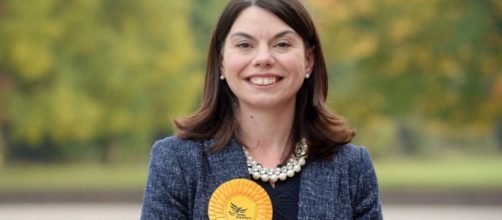Zac Goldsmith hasn’t had a particularly great year, once heralded as a future leader who could unite the party. A Conservative that occupied the middle ground of party policy, someone who was largely known as being a more liberal-minded Conservative. His year started off with so much promise and was chosen to lead the Tory bid to replace Boris Johnson as London Mayor, unfortunately, that was the first stage of Failure for Goldsmith in 2016.
In the meantime, and the midst of his latest downfall has seen a possible spark for the second half of the coalition that graced Downing Street in 2010-15.
The Liberal Democrats under Tim Farron have seen a mini-resurgence, but is this the moment that ignites rebirth of the Lib Dems?
Fool’s Gold(smith)
Zac Goldsmith had much support from every wing of the Conservative party and was a prominent Leave campaigner during the referendum. He was the overwhelming popular choice to lead the Tories during the London Mayoral election. However, he let himself down by allowing racist, discriminatory, and divisive rhetoric to take over his campaign. He often used Sadiq Khan’s faith as a Muslim to claim that he was a terrorist sympathiser, and tried to discredit Khan in one of the most multicultural cities in the world. Goldsmith tried to divide and conquer but with little effect as also on June 23rd London voted to remain in the EU, further highlighting the divisive right populist rhetoric he was pedalling was never going to work.
His latest failure has come in his own constituency that he took from the Lib Dems in 2010. He resigned from the Conservatives over the expansion plans to Heathrow, whilst the reason is largely correct, his Mayoral campaign hasn’t been forgotten especially as Richmond Park overwhelmingly voted to remain within the EU. He ran as an independent to oppose the expansion plans, except the party he left didn’t stand against him. This meant that he was a Tory without the blue tie and defeated the object of him resigning and standing as an independent, because the reality is that he was not independent from the Conservatives in ideology. UKIP also decided not to stand a candidate and likewise the Green Party, who were in support of Goldsmith and Lib Dem candidate Sarah Olney respectively.
Failure and rebirth?
Goldsmith failed spectacularly and the politics of division lost again after the Lib Dems pushed plenty of resources into the Richmond Park by-election. His failure and fall from grace this year has been spectacular and once heralded as a voice of reason within the Tories, it is doubtful he will ever regain his credibility. But within this we have also seen a possible rebirth of the Lib Dems, is this the spark that was needed and will they again begin to flourish? Since Tim Farron became leader he has stabilised the party after a spectacular trouncing in the 2015 General Election.
This win shows that despite a huge swing required, it could be done. In 2015 Goldsmith had 58.21% and 34,404 votes with Lib Dem candidate Robert Meltzer trailing with just 19.27% and 11,389 of the votes.
It was a stronghold that didn’t look like it could be overturned; possibly reduced. But after piling as many resources as possible Sarah Olney achieved a huge 30.41% increase in voter share, meaning she ousted Goldsmith with 49.68% of the votes to his 45.15% or 20,510 and 18,638 votes respectively.
Looking to the future
The Lib Dems will see that as a moment that could signal their return to mainstream politics and the next general election could see British politics shift drastically. With Paul Nuttall signalling his intent as UKIP leader and the possible rebirth of the Lib Dems. How British politics will look in the future is a mystery and as we have seen, the polls tend to be wrong. The future of British politics is interesting and the hope is that as a society, we don’t embrace the right populist rhetoric pedalled by the likes of UKIP and Goldsmith but we continue to be an open and tolerant nation.

